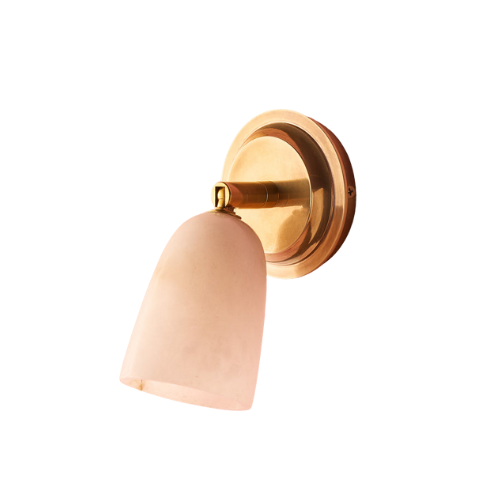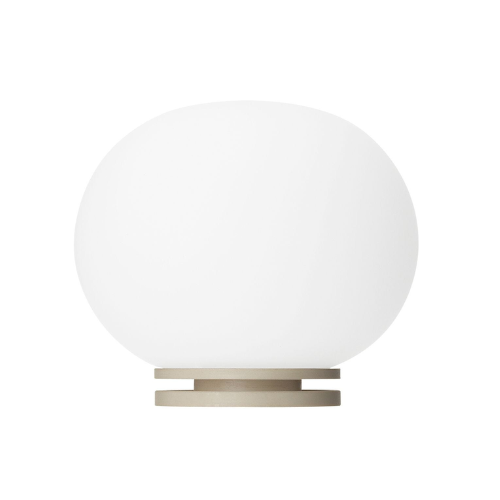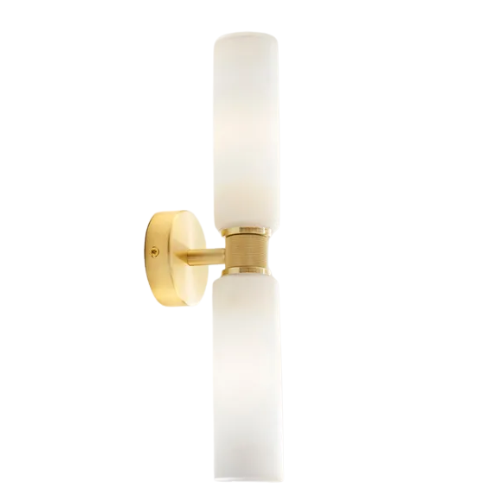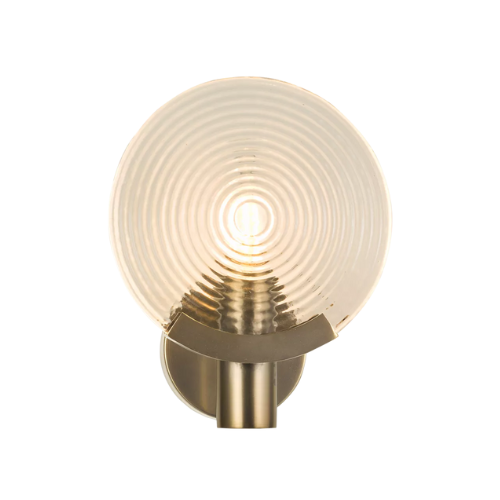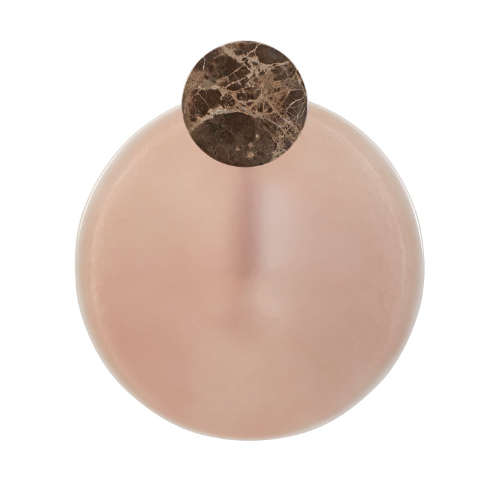Can't See to Get Ready Properly? These Tricks for Lighting Around a Bathroom Mirror Are What Everyone Who Uses One to Do Their Makeup Should Know
The first step to a perfect makeup routine? It all begins with the proper bathroom mirror lighting
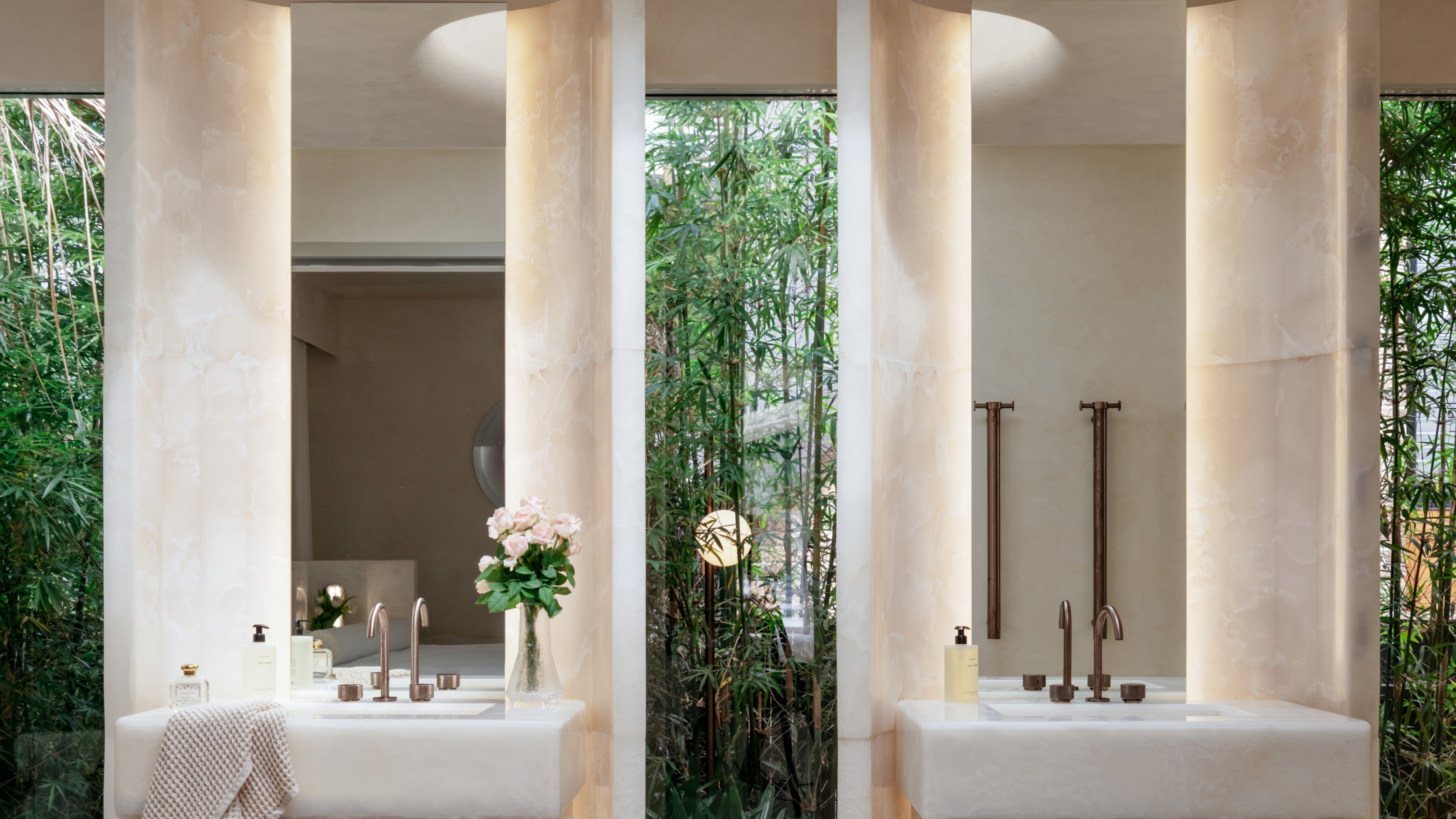

If you've ever suffered the harsh shock of emerging out of your bathroom into natural light, just to be met with a streaky, blotchy face, you already know the importance of proper bathroom mirror lighting.
Many a 'good makeup day' has been sabotaged at the hands of my harsh overhead bathroom lighting, and quite frankly, I've had enough of it. For months, I couldn't quite figure out the problem, assuming instead that it was the fault of my too-old brushes or drugstore makeup. It wasn't until I stepped into an appropriately lit space, with a well-illuminated bathroom mirror, that I realized the problem had nothing to do with me or my makeup, but rather was purely down to my unflattering lighting.
As Jo Mann, from Light House Design, explains to me, "Lighting around a bathroom mirror should aim to provide even illumination across the face so that makeup and grooming are effortless." The more even and consistent your bathroom lighting ideas, the smoother and seamless your makeup application will be. If you thought primer was the first step to a flawless application, we're here to offer a new starting point for you, because the true secret to a good makeup day, every day, lies in your bathroom mirror lighting.
Jo established Light House Designs in 2010, after gaining considerable experience across a broad spectrum of architectural design and decorative sectors of the lighting industry. Besides a large number of high-end residential projects, she has been responsible for designing lighting design schemes in hotels, spas, restaurants and creative workspaces.
What Are the Most Common Mistakes When Lighting a Bathroom Mirror?
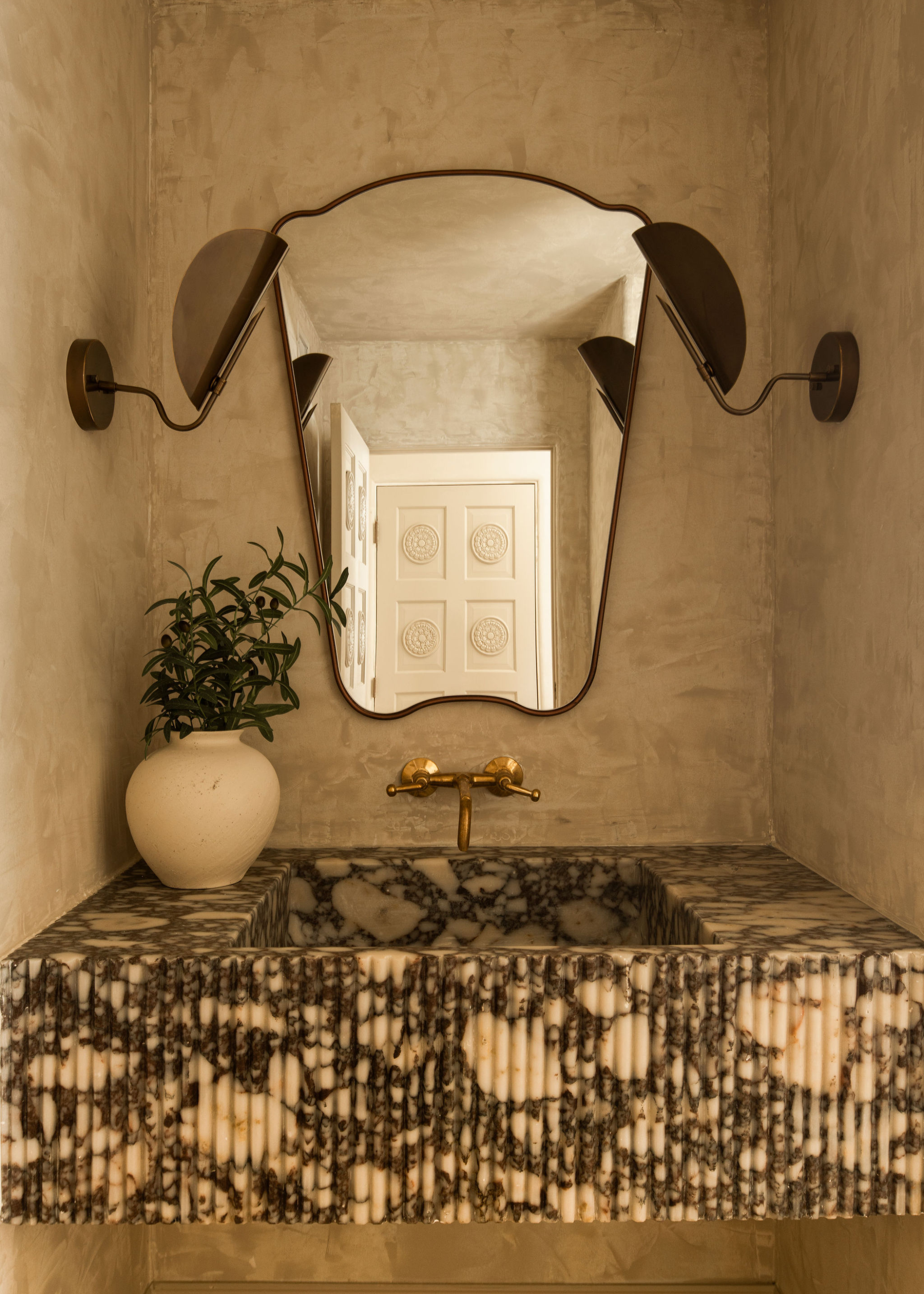
Avoiding overhead lighting is the expert's number one tip to achieving a flattering lighting scheme in your bathroom.
Before we can properly learn how to get it right, it can be helpful to first establish the mistakes that are tripping us all up.
And the experts are unanimous when it comes to identifying this error. "The most common mistake people make when lighting their bathroom mirrors is relying only on an overhead light," says Betty Kajajian, from John Cullen Lighting.
While this overhead light can take several forms, on the whole, a singular overhead light source is never going to be the most flattering. As Betty explains, "A single downlight or ceiling fixture casts strong shadows under the eyes, nose, and chin, making it unflattering and impractical for tasks like shaving or applying makeup."
While one overhead light might feel like enough in other spaces, there's a reason designers don't recommend relying on overhead lighting in bathrooms. Jo agrees and says, "A single recessed downlight above the basin casts strong shadows under the eyes and chin, which is both unflattering and impractical for make-up and grooming." Though she goes on to add, "Another issue comes from ceiling grids that ignore basin placement."
The Livingetc newsletters are your inside source for what’s shaping interiors now - and what’s next. Discover trend forecasts, smart style ideas, and curated shopping inspiration that brings design to life. Subscribe today and stay ahead of the curve.
Grid lighting is popular in large spaces, as it provides a straightforward guideline to lighting, but, as Jo explains, "When fittings are arranged purely by geometry rather than function, they miss the face entirely, leaving uneven light and harsh contrast." This can end up creating a very similar effect to singular overhead lighting. Either you'll find yourself with a harsh beam accentuating your features, or you could end up in an unlit spot, where shadows will make it equally difficult for you to effectively apply your makeup.
"Finally, the wrong color temperature can ruin otherwise good lighting. Very cool white light feels stark and drains skin tones, while overly warm light makes colors appear flat or yellowed," Jo goes on to say.
The color of your lighting can be a particularly tricky thing to figure out when planning your bathroom lighting. You want to replicate something as close to natural light as possible, so you can accurately see how your makeup will look once you step outside. Super warm lighting can bring a yellow tone to your face that may make your foundation look awkward, while a too-cool light can drain you of any color, so you'll end up piling on the bronzer in an attempt to counteract it.
Since 2011, Betty has contributed to a wide range of projects, spanning residential, hospitality, commercial, museum, and public realm sectors across the UK, Europe, and the Middle East. Holding a BA in Interior Architecture and an MA in Photography, Betty brings a distinctive approach to each project, combining her design background with a creative eye. Known for cultivating strong client relationships, Betty ensures that every project is executed with precision and attention to detail.
How to Light a Bathroom Mirror
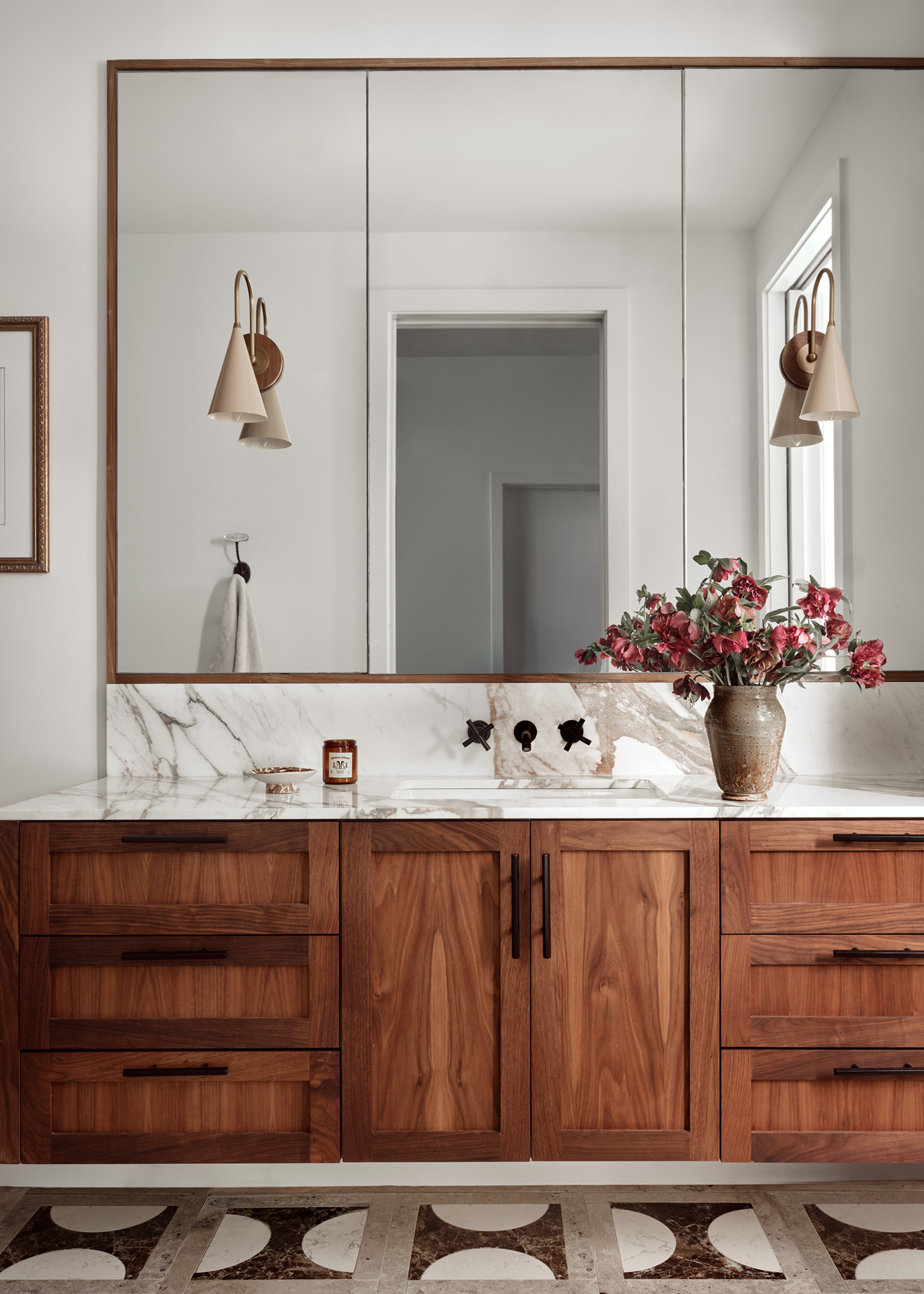
Fitting the wall lights onto the mirror helps create a more sleek, modern finish.
So, overhead, harsh, grid lighting is clearly a big no-no, but what do the experts recommend doing instead?
It's all about figuring out where light can hit in a way that is guaranteed to be flattering. We're looking for an even glow that is neither too cool nor too warm.
For many, the best way to achieve this is with symmetrical wall lights. "For the most flattering and accurate result, position a pair of wall lights at face height, one on either side of the mirror," recommends Jo.
She goes on to explain, "This setup ensures balanced light and eliminates unwanted shadows. In bathrooms with double vanity basins, having a light between the mirrors and one on each outer edge will keep illumination even."
Central and even illumination are the two key factors in ensuring your makeup application process will be as seamless as possible. Betty says, "This can be achieved by placing wall lights on either side of the mirror, or by having mirror-integrated linear lighting so the light falls evenly across the face (unlike a backlit mirror, which mostly lights the wall behind rather than the user’s face)."
And this doesn't mean entirely ditching the overhead lights, either. As Betty mentions, "For the best result, these sources should be supplemented with a softer overhead light to provide balanced fill."
Typically, the best results will only be achieved by using several different light sources in conjunction. The team at Owl Lighting tells me, "Side light is the most flattering, combined with some downlighting."
To take it one step further, you should also look for light fittings that offer a slightly diffused, softened illumination. Jo says, "Always use fittings with frosted glass or opal diffusers to soften the glow and prevent glare." This more gentle light source will create a softer, smoother appearance. And who would say no to that?
The Best Lights for Doing Your Makeup
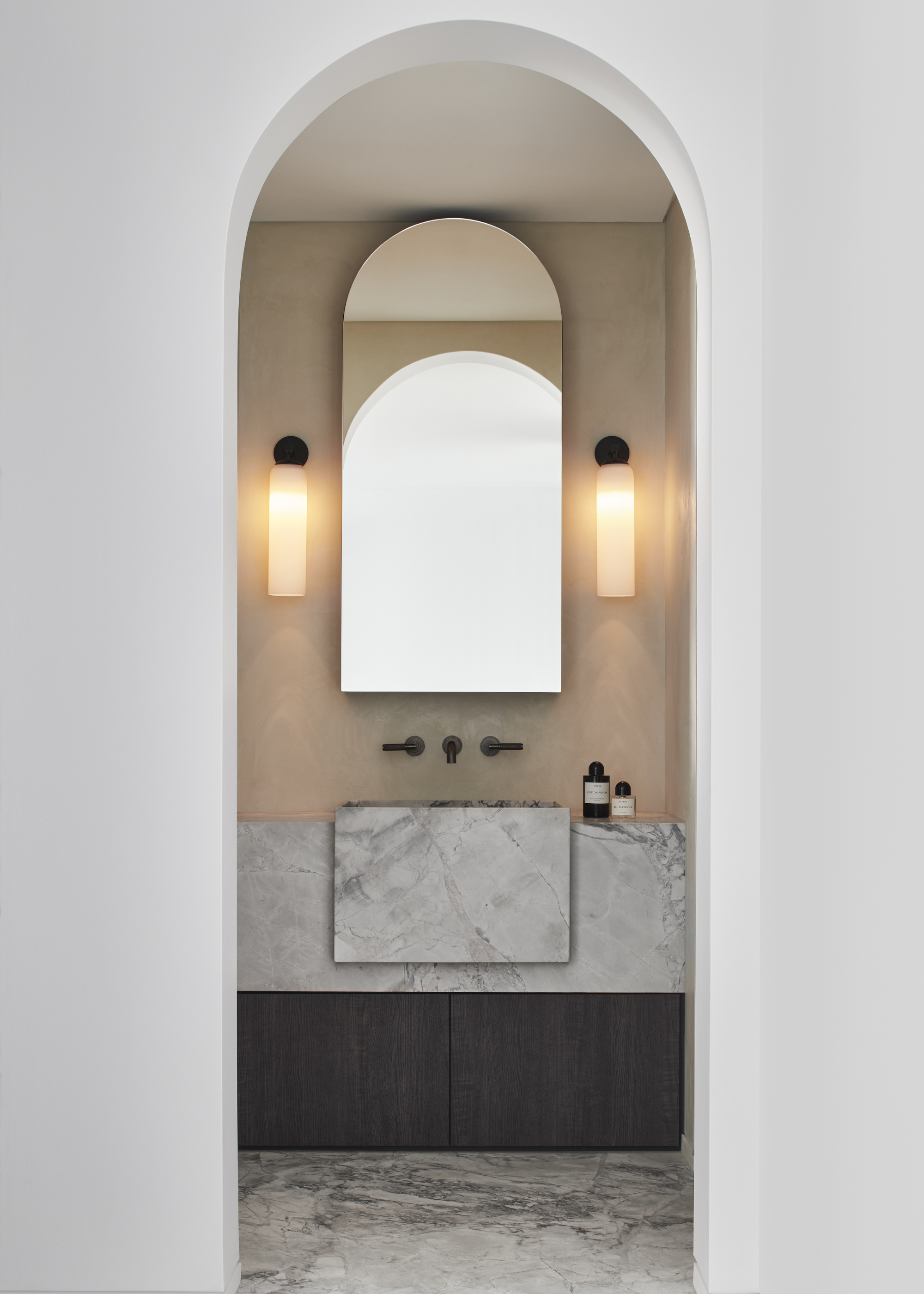
A frosted glass shade with a warm-toned light bulb is the ideal combination for flattering lighting.
Now you know where to position your light sources, but with so many different places to buy bathroom lighting from, the harder decision can be knowing which type of light to choose.
Luckily, the experts have plenty of helpful rules for you to follow when picking out your new bathroom lights.
"Choose IP-rated wall lights with glass or card shades (IP44 or higher for safety near water)," recommends Jo. She continues, saying, "Pair them with high-quality LEDs that have a CRI of 90 or above, so skin tones look true to life. A dimmer control is essential, allowing the lighting to shift from bright and functional in the morning to soft and ambient in the evening."
This might all sound a bit technical, but it's nothing to be scared of. IP-rated refers to a standard called Ingress Protection, and it measures the degree of protection electrical fittings have against things like dust and water, which will be particularly important for bathroom fittings.
As well as IP, the CRI, or color rendering index, is another thing you should look out for when buying your bathroom mirror lighting. As Betty explains, "The most effective fixtures are diffused lights with a high CRI (Color Rendering Index, ideally 90+) to ensure accurate skin tone and makeup application. A color temperature of 2700–3000K strikes the right balance, warm enough to be flattering, but not so warm or cool that it alters color perception."
For the most flattering glow, two symmetrical lights to the side is always the safest bet. The team at Owl Lighting recommends, "Wall lights on either side of the mirror with a soft recessed downlight positioned in front of the face to highlight and balance."
Light Up Your Space
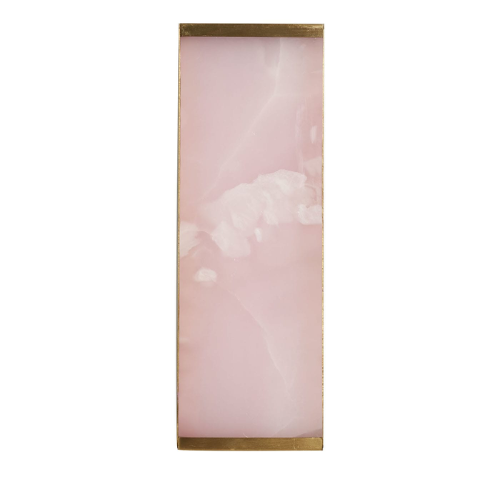
A feminine, spa bathroom would not be complete without these pink onyx wall lights. Not only do they look straight out of a fairy tale, but the pink diffused light would offer a supremely flattering glow.
Once you've got the lighting down, the only other thing to make sure you're fully clued up on is how to choose a bathroom mirror. You want one that offers you a clear, undisturbed view for your makeup application, so in many cases, the simpler, the better.
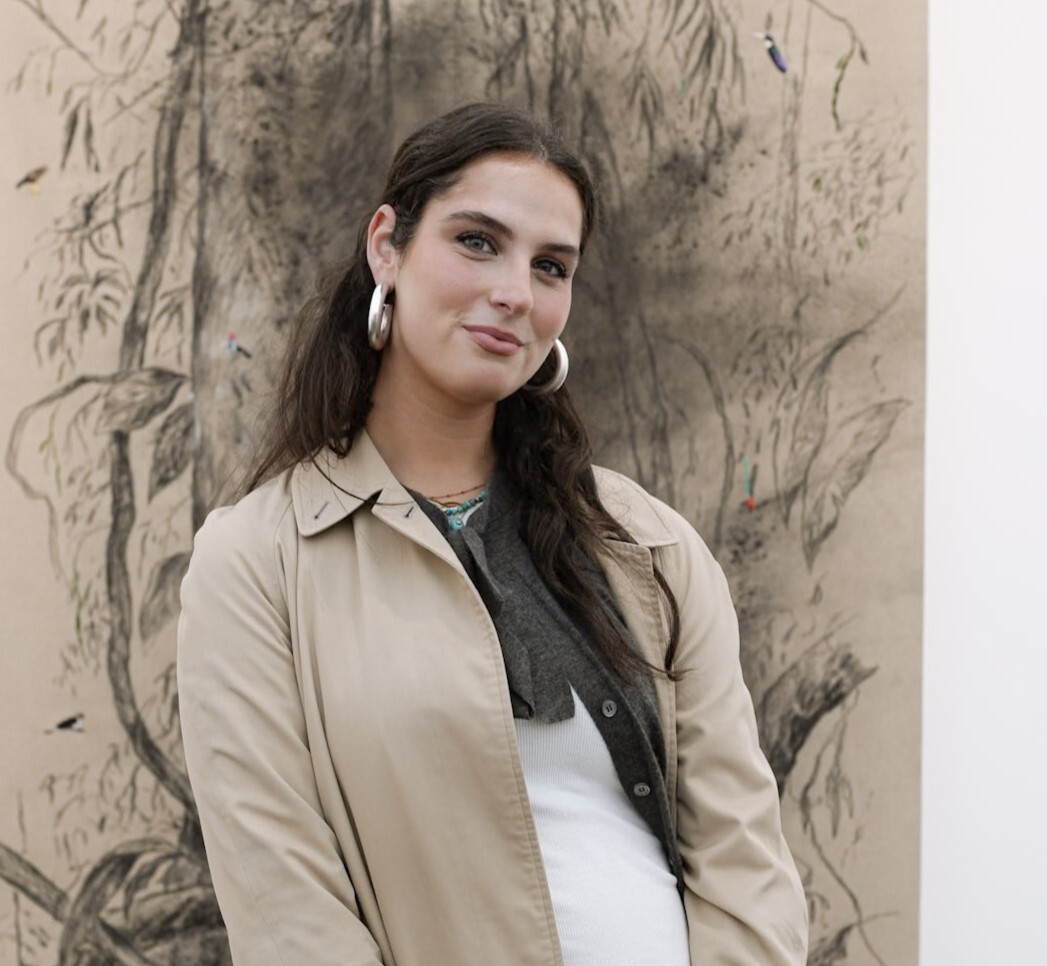
Maya Glantz is a Design Writer at Livingetc, covering all things bathrooms and kitchens. Her background in Art History informed her love of the aesthetic world, and she believes in the importance of finding beauty in the everyday. She recently graduated from City University with a Masters Degree in Magazine Journalism, during which she gained experience writing for various publications, including the Evening Standard. A lover of mid-century style, she can be found endlessly adding to her dream home Pinterest board.
